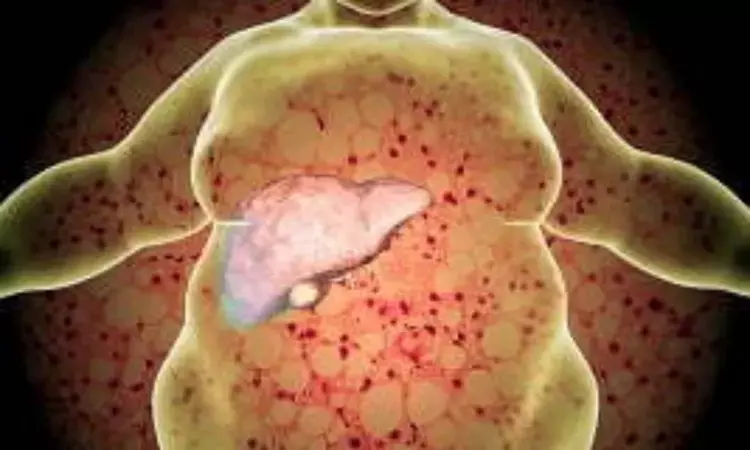- Home
- Medical news & Guidelines
- Anesthesiology
- Cardiology and CTVS
- Critical Care
- Dentistry
- Dermatology
- Diabetes and Endocrinology
- ENT
- Gastroenterology
- Medicine
- Nephrology
- Neurology
- Obstretics-Gynaecology
- Oncology
- Ophthalmology
- Orthopaedics
- Pediatrics-Neonatology
- Psychiatry
- Pulmonology
- Radiology
- Surgery
- Urology
- Laboratory Medicine
- Diet
- Nursing
- Paramedical
- Physiotherapy
- Health news
- Fact Check
- Bone Health Fact Check
- Brain Health Fact Check
- Cancer Related Fact Check
- Child Care Fact Check
- Dental and oral health fact check
- Diabetes and metabolic health fact check
- Diet and Nutrition Fact Check
- Eye and ENT Care Fact Check
- Fitness fact check
- Gut health fact check
- Heart health fact check
- Kidney health fact check
- Medical education fact check
- Men's health fact check
- Respiratory fact check
- Skin and hair care fact check
- Vaccine and Immunization fact check
- Women's health fact check
- AYUSH
- State News
- Andaman and Nicobar Islands
- Andhra Pradesh
- Arunachal Pradesh
- Assam
- Bihar
- Chandigarh
- Chattisgarh
- Dadra and Nagar Haveli
- Daman and Diu
- Delhi
- Goa
- Gujarat
- Haryana
- Himachal Pradesh
- Jammu & Kashmir
- Jharkhand
- Karnataka
- Kerala
- Ladakh
- Lakshadweep
- Madhya Pradesh
- Maharashtra
- Manipur
- Meghalaya
- Mizoram
- Nagaland
- Odisha
- Puducherry
- Punjab
- Rajasthan
- Sikkim
- Tamil Nadu
- Telangana
- Tripura
- Uttar Pradesh
- Uttrakhand
- West Bengal
- Medical Education
- Industry
Uric acid to HDL ratio useful biomarker for diagnosing hepatic steatosis: Study

The ratio of serum uric acid to high-density lipoprotein-cholesterol is useful in diagnosing hepatic steatosis, suggests a study published in the Rev. Assoc. Med. Bras.
Non-alcoholic fatty liver disease, which is characterized by lipid being deposited into hepatocytes, affects nearly one in three adults globally. Inflammatory markers were suggested to be related to hepatic steatosis. Uric acid to HDL cholesterol ratio is proposed as a novel inflammatory and metabolic marker.
A group of researchers from Brazil conducted a study to compare Uric acid to HDL cholesterol ratio levels of patients with Non-alcoholic fatty liver disease to those of healthy controls and find out potential correlations between Uric acid to HDL cholesterol ratio and other inflammatory and metabolic markers of Non-alcoholic fatty liver disease.
Patients with a diagnosis of Non-alcoholic fatty liver disease who were on clinical follow-up in our institution were enrolled in the study as the Non-alcoholic fatty liver disease group, while healthy volunteers were enrolled as the control group. The Uric acid to HDL cholesterol ratio of the groups was compared and potential correlations were studied between Uric acid to HDL cholesterol ratio and fasting blood glucose, transaminases, serum lipids (triglyceride, LDL-cholesterol), weight, and body mass index.
The results of the study are as follows:
· The Uric acid to HDL cholesterol ratio of the Non-alcoholic fatty liver disease (13±5%) group was significantly higher compared to the Uric acid to HDL cholesterol ratio of the control (10±4%) group (p<0.001).
· Uric acid to HDL cholesterol the ratio was significantly and positively correlated with fasting blood glucose, transaminases, triglyceride, body weight, waist circumference, hip circumference, and body mass index.
· A ROC analysis revealed that a Uric acid to HDL cholesterol ratio level greater than 9.6% has 73% sensitivity and 51% specificity in determining Non-alcoholic fatty liver disease.
Thus, the authors concluded that due to the inexpensive and easy-to-assess nature of Uric acid to HDL cholesterol ratio, we suggest that elevated Uric acid to HDL cholesterol ratio levels be considered a useful tool in diagnosing hepatic steatosis.
Reference:
The association between serum uric acid to high-density lipoprotein-cholesterol ratio and non-alcoholic fatty liver disease: the abund study by Kosekli M et. al published in the Rev. Assoc. Med. Bras.
https://doi.org/10.1590/1806-9282.20201005
Dr. Shravani Dali has completed her BDS from Pravara institute of medical sciences, loni. Following which she extensively worked in the healthcare sector for 2+ years. She has been actively involved in writing blogs in field of health and wellness. Currently she is pursuing her Masters of public health-health administration from Tata institute of social sciences. She can be contacted at editorial@medicaldialogues.in.
Dr Kamal Kant Kohli-MBBS, DTCD- a chest specialist with more than 30 years of practice and a flair for writing clinical articles, Dr Kamal Kant Kohli joined Medical Dialogues as a Chief Editor of Medical News. Besides writing articles, as an editor, he proofreads and verifies all the medical content published on Medical Dialogues including those coming from journals, studies,medical conferences,guidelines etc. Email: drkohli@medicaldialogues.in. Contact no. 011-43720751


